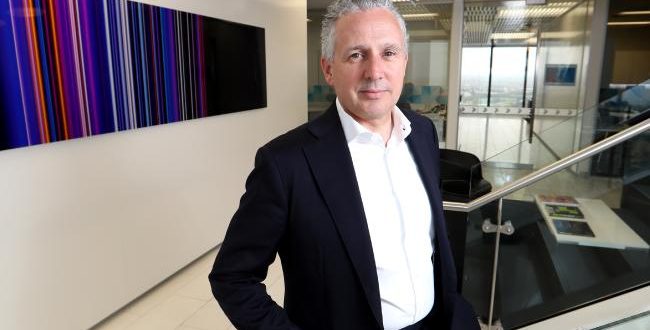Telstra is looking to carve out a significant efficiency dividend for its networks with its continued push in the 5G space, with chief executive Andrew Penn confident the telco will maintain its lead over the likes of Optus and Vodafone.
With all three operators committed to juicing up their respective networks, Mr Penn said that success in the 5G space isn’t simply about his much money you throw into the process.
“5G won’t be exclusive to anybody but how you deliver it, the quality of your network and how you bring the technology together with the applications is where the point of differentiation will be,” Mr Penn told The Australian at the Mobile World Congress.
He added that Telstra was steadily fine tuning the emergent business models.
“Our Internet of Things business already generates $150 million in revenue and we expect that to explode quickly. We make as much revenue from our enterprise customers for providing services around cloud and managed security as we do from our underlying telecommunications service.”
The telco’s latest results may have highlighted a stagnation of its core earnings but Telstra’s network applications and services (NAS) business continues to grow from strength to strength.
Fiercer mobile competition and the impact of the National Broadband Network (NBN) dented Telstra’s underlying profit for the six months to December 31 with the $1.79 billion posted for the period missing analysts’ expectations for an underlying profit of $2.04 billion.
However, the NAS business grew its revenue 18 per cent to $225m with EBITDA rising 330 per cent to $117m and it’s a side of the business that Telstra is looking to scale up quickly.
Telstra has made a flurry of announcements during the conference, with the telco picking equipment partner Ericsson to upgrade its core networks over the next three years and announcing plans to launch a range of services based on LTE-Broadcast (LTE-B) within the next 12 months.
The telco isn’t alone in its 5G efforts locally, with Optus and Vodafone also pushing ahead with their investments.
Optus is working with Huawei on rolling out its 4.5G services across 70 per cent of its network over the next 12 months and Vodafone recently signed a new five-year deal with Ericsson and Cisco to make its core infrastructure 5G ready by 2020.
According to Mr Penn, the investment in 5G wasn’t simply about creating purpose-built solutions for consumers but also reinforcing the entire Telstra network, fine tuning how the traffic moves across it to add more overall capacity.
Network capacity is crucial to mobile operators as video content becomes the primary driver of traffic and Mr Penn added that latency is also going to become a big factor in the IoT environment.
He added that the latest instalment of MWC has been a definitive step forward in the unfolding evolution of 5G.
“5G has been on the agenda of the industry for the last few years but we are finally seeing some use cases emerge,” he said.
The International Telecommunications Union (ITU) recently released the technical requirements for 5G radio interfaces, specifying the per user speeds, connection density and latency.
The draft report specifies a per-user download speed of 100Mbps and upload speed of 50Mbps, the ability for each 5G base station to handle at least 20 Gbps downlink and 10 Gbps uplink of traffic, and a maximum latency of 4 milliseconds (ms).
Mr Penn stressed that the 5G evolution of networks won’t necessarily focus on end user speeds.
While there will be an overall improvement as 5G-enabled handsets come into the market, according to Mr Penn, it’s reliability that will see a substantial uplift.
This reliability is underpinned by the overall capacity of the network, which Mr Penn said will come as a combination of intelligent hardware and software is deployed to better manage traffic.
“We are investing in radio access equipment but also in software, historically all the smarts used to be in the box in the tower but we are starting to abstract some of this into a software layer,” he said.
“It makes things more efficient but it’s hard to predict whether 5G will be any cheaper to roll out than any other technology.”
The author travelled to Barcelona as a guest of Oppo.
Reader comments on this site are moderated before publication to promote lively and civil debate. We encourage your comments but submitting one does not guarantee publication. We publish hundreds of comments daily, and if a comment is rejected it is likely because it does not meet with our comment guidelines, which you can read here. No correspondence will be entered into if a comment is declined.





